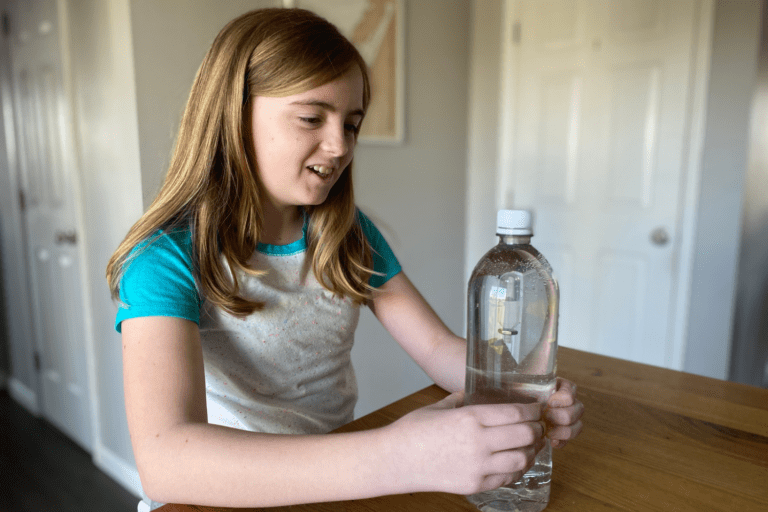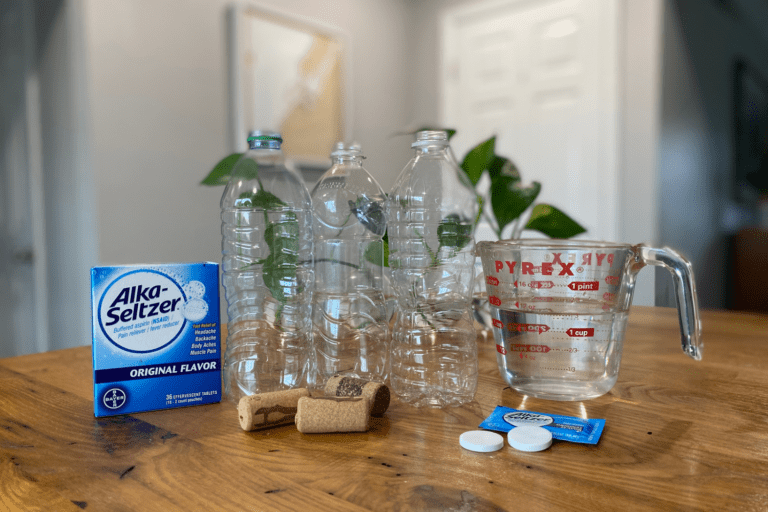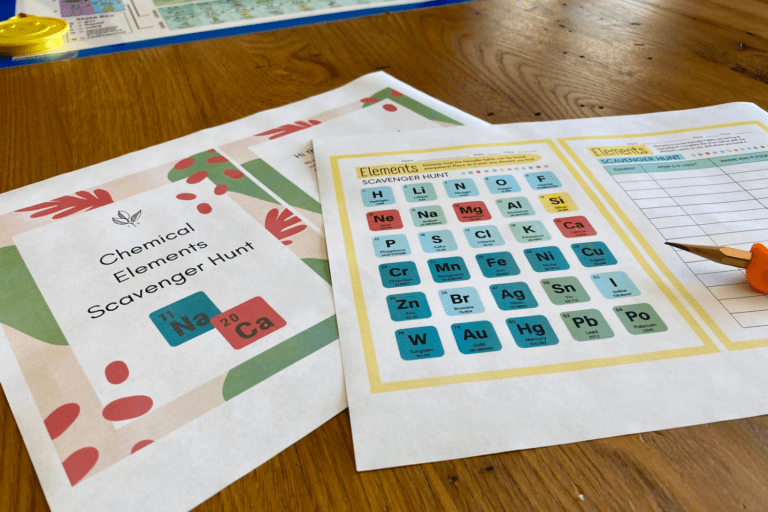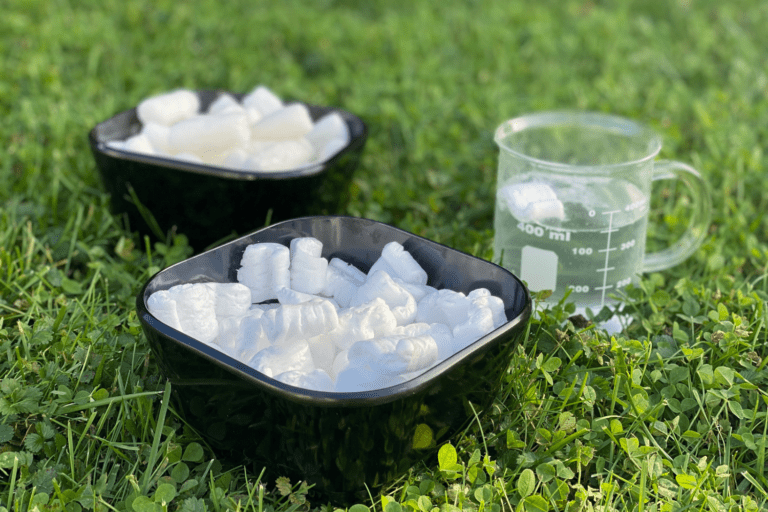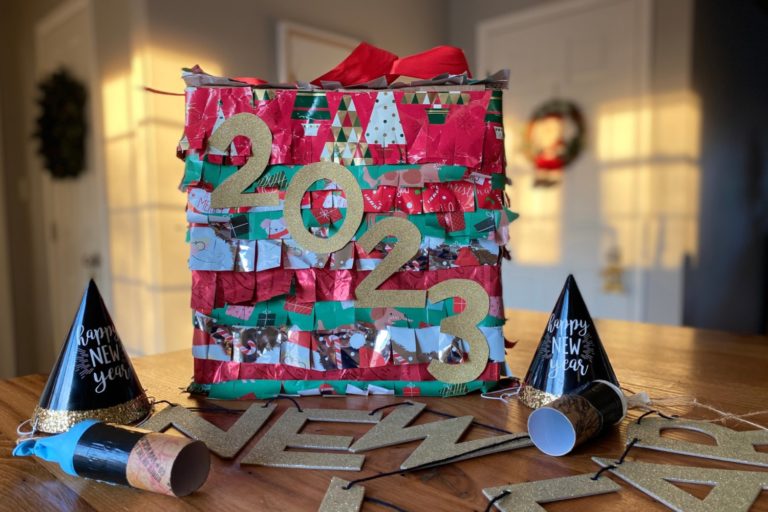5 Ways to Reuse Plastic Bottles for Science Activities
Looking for engaging, hands-on science activities that are budget-friendly? Check out these 5 ways to reuse old plastic bottles for fantastic science experiments!
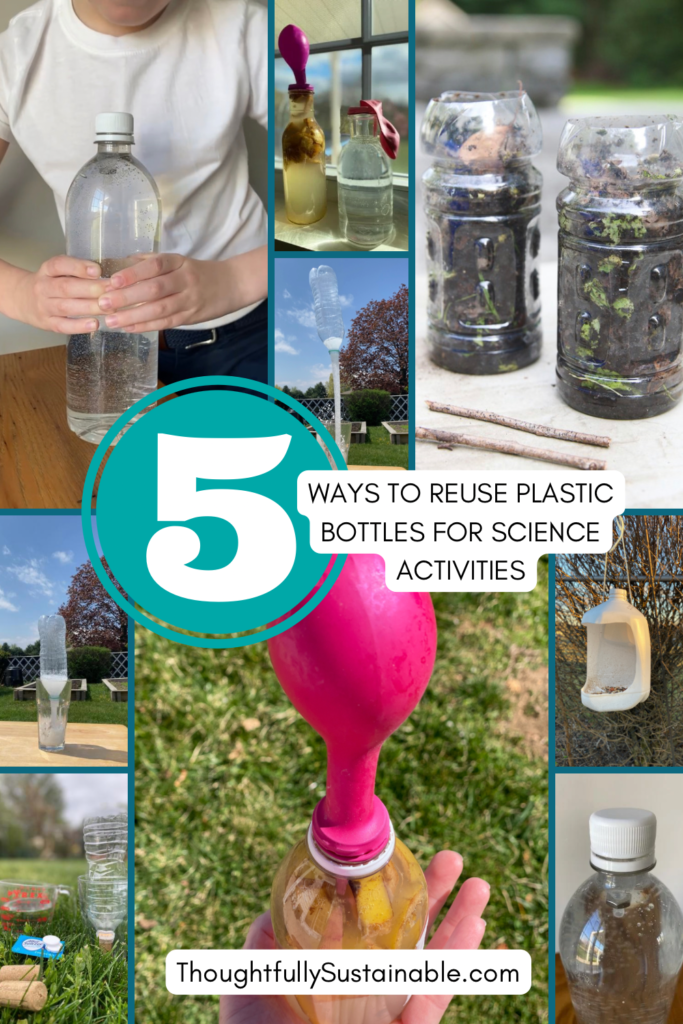
According to the Container Recycling Institute, the United States produces around 70 million plastic bottles per day, which translates to approximately 25.5 billion bottles and plastic bottle caps per year. This number only includes plastic bottles used for beverages and does not include other types of plastic bottles used for other purposes. That’s a lot of plastic bottles! Needless to say, its a good idea to find alternative uses for these materials that are made with the intent of single use. You’ll be amazed at how little hands can transform bottled water and other plastic items to create simple projects and amazing experiments for science investigations.
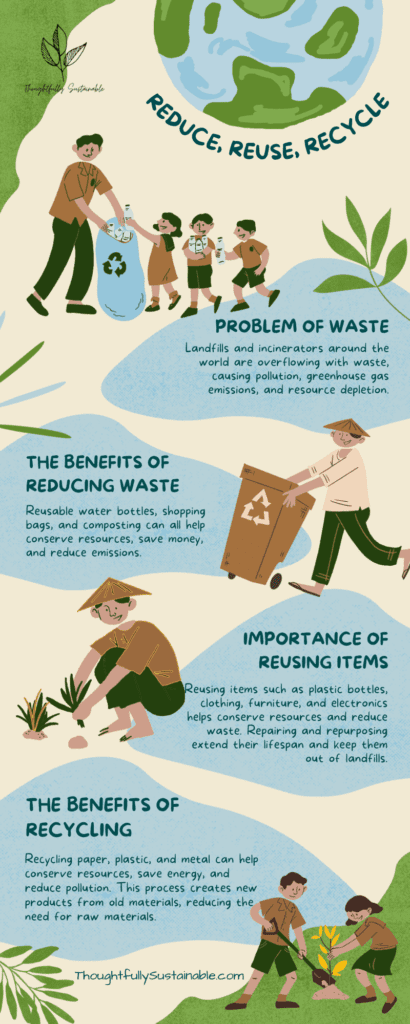

Choose to Reuse Plastic Bottles Before You Recycle Them
Both reusing and recycling plastic water bottles, drink containers and laundry jugs are a great way for reducing waste and preserving resources, but reusing is generally considered to be better than recycling for a few reasons:
- Reusing avoids the energy, natural resources, and monetary resources required for recycling: When you reuse an item, you’re able to extend its lifespan and keep it out of the waste stream, which means that it doesn’t need to be processed for recycling. Recycling requires significant amounts of energy and resources to collect, sort, and process materials, so reusing is a more efficient way to reduce waste.
- Reusing can be done multiple times: Many items can be reused multiple times before they need to be recycled, which means that they can provide even greater benefits in terms of waste reduction and resource conservation.
- Reusing promotes a circular economy: Reusing items within the same community or organization can create a closed-loop system in which waste is minimized and resources are conserved. This type of circular economy is more sustainable and resilient than a linear economy based on production, consumption, and disposal.
That being said, recycling is still an important way to reduce waste and conserve resources, especially for items that can’t be easily reused. Ultimately, the best approach to waste reduction is to prioritize reusing whenever possible, and to toss recyclable materials in the recycling bin when reuse is no longer feasible.
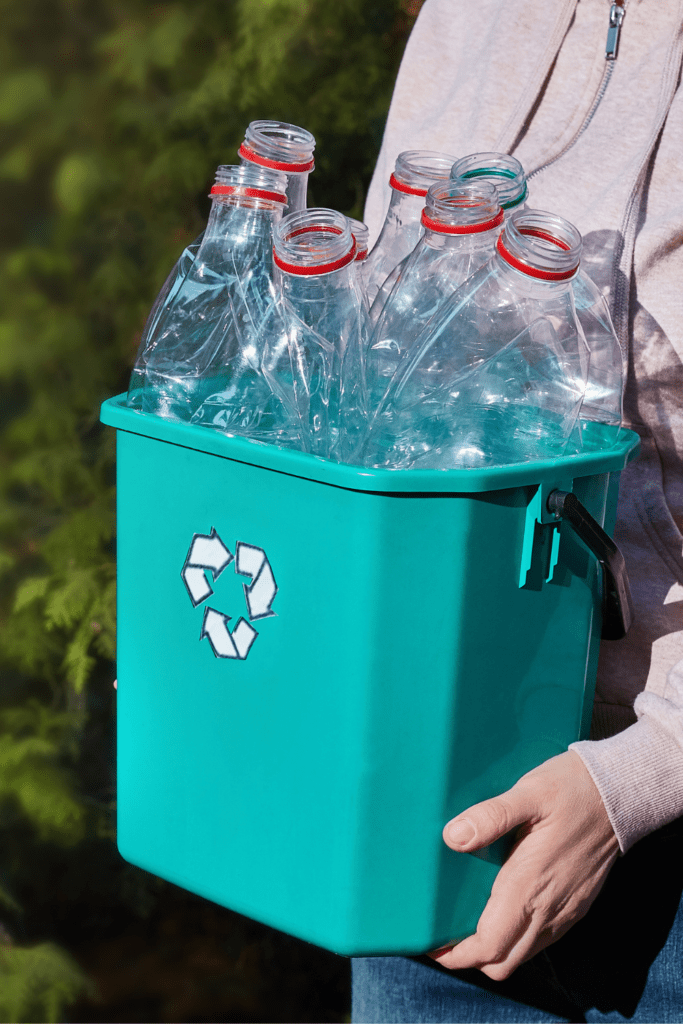

What Types of Plastic Bottles Are Best for Science Activities?
In the United States, the most common plastics used in plastic containers and bottles are polyethylene terephthalate (PET) and high-density polyethylene (HDPE).
PET is a lightweight, strong, and transparent plastic that is commonly used in soda, water, and juice bottles. It is also used in other food and non-food packaging applications such as jars, trays, and films. The recycling number for PET plastic is #1, which is usually found on the bottom of the plastic bottle or container inside a triangle made of arrows
HDPE is a heavier, opaque plastic that is commonly used in milk, detergent, and shampoo bottles. It is also used in other applications such as toys, buckets, and pipes. The recycling number for HDPE plastic is #2, which is also usually found on the bottom of the plastic bottle or container inside a triangle made of arrows.
Both PET and HDPE are lightweight, durable, reusable, and easily accessible, making them fantastic materials for creative ideas in science.
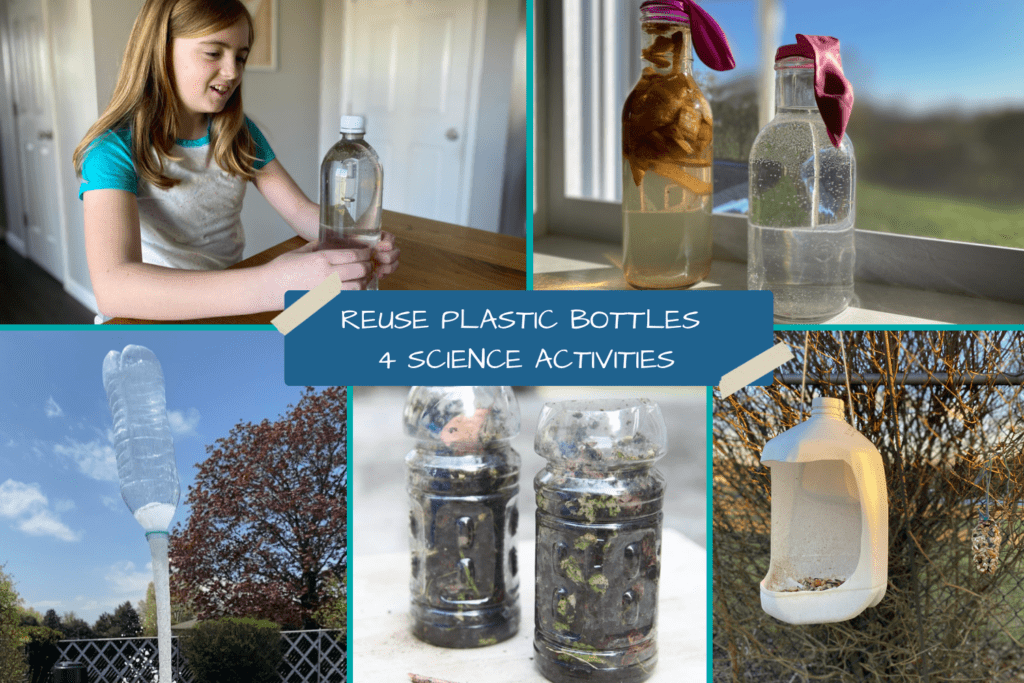

5 Ways to Reuse Plastic Bottles for Science Activities
Here are a list of easy ways that single-use plastic water bottles, plastic soda bottles, milk jugs, and other everyday items can be utiized to create simple projects for science investigations, earth day celebrations, and art classes that the entire family can learn from.
Build an Alka-Seltzer-Powered Rocket
Do you have empty plastic bottles and some Alka-Seltzer tablets? Then you have the materials for an Alka-Seltzer rocket science experiment, no hot glue needed! Click here to learn how to transform a single-use plastic water bottle into a rocket using simple acid-base chemistry.
Create a Cartesian Diver
You may have seen a Cartesian diver demonstration before, where a small, air-filled object moves up or down inside of a reusable plastic bottle, depending on how hard the bottle is squeezed. Did you know that this simple science experiment can be used to teach multiple physics concepts? Perfect for multiple age groups and abilities, the creation of a Cartesian diver can be used to address Boyle’s Law, buoyancy, Archimedes’ Principle and the reuse of materials! Learn how to make one here.
Construct a Soil-arium
What if we could break down composting for kids so they could see it happening with their own little eyes on a kid-sized scale? Wouldn’t that be fun?
Over on Raising Global Kidizens, we created a simple sustainability science experiment for kids to learn how to build a soil-arium using plastic bottles! A soilarium is a clear container packed with composting ingredients to make a loamy soil amendment that kids can use as their own little science laboratory. Read on for instructions and a downloadable workbook to teach kids how to conduct their own composting experiment by building a soil-arium.
Learn About Landfills
Allow kids to observe how food waste produces gas during decomposition with this simple sustainability science experiment that utilizes food scraps and single-use plastic bottles. Read on get the full instructions to try this science experiment and simulate how food scraps in our landfill emit potent greenhouse gases into our atmosphere.
Make a Backyard Bird Feeder
Have any drink cartons, soda bottles or milk jugs? Then you’ve got the makings for a birdfeeder! Children innately want to be helpful, so why not let them be in charge of feeding the backyard birds? In return, they’ll get to observe and identify the feathered friends (and any resident squirrels or rabbits) that reside in their community. Follow these simple step-by-step instructions to create a bird feeder.
Have any other suggestions for creative ways to transform reusable water bottles for science activities? Leave your great project ideas in the comments below!


